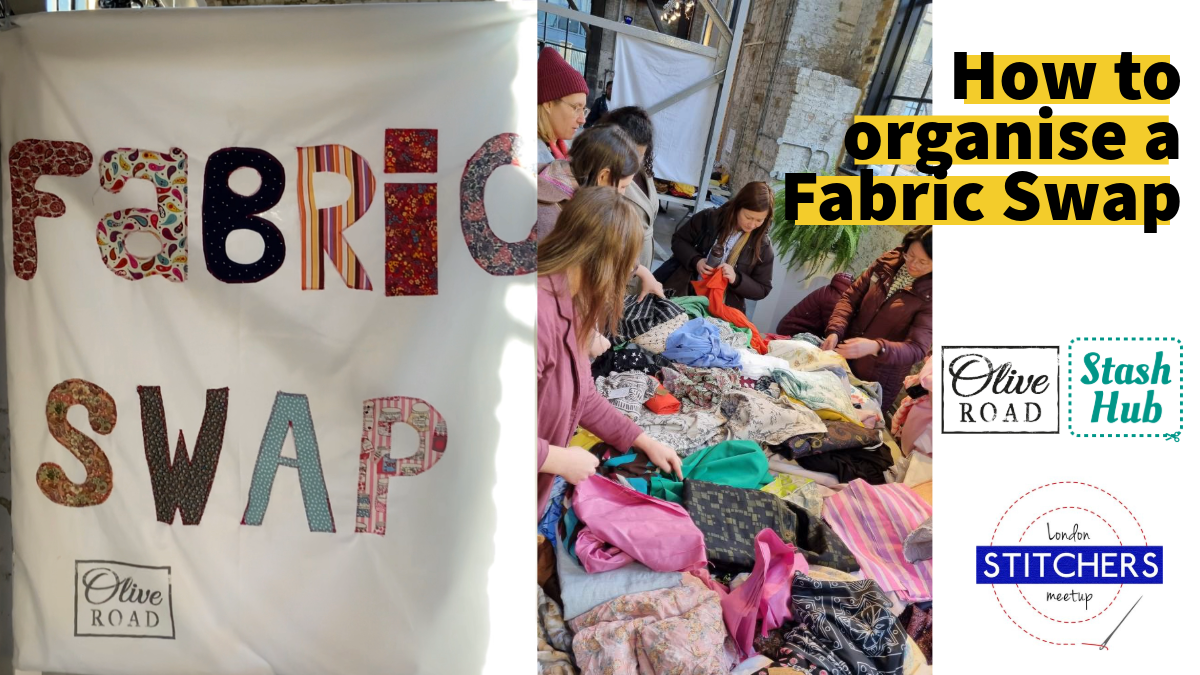
I’ve organised two fabric swaps at Craft Central in London’s Docklands and I am so pleased with how they both went. Thanks to the friendly and collaborative nature of sewists along with a bit of organisation. Yvette from Stash Hub helped me organise the swap in January 2024, we have pulled together some tips to help others organise their own swap. There was a lot of unwanted fabrics on offer so the more people that hosts swap the better it is for the environment and less fabric will be thrown into landfill. The original venue has closed down along with my vintage fabric shop. I’m working on finding another venue to continue the swaps in January 2025 – I’ll add the details to my Instagram page when they are confirmed.
Watch my You Tube video or carry on scrolling down for the top tips
1. Work backwards: Plan your textile waste
The best advice I was given before my first fabric swap was to be prepared for lots of waste. It might seem strange to start with this tip but unless you have lots of storage space, I recommend planning a home for left over fabrics and haberdashery.
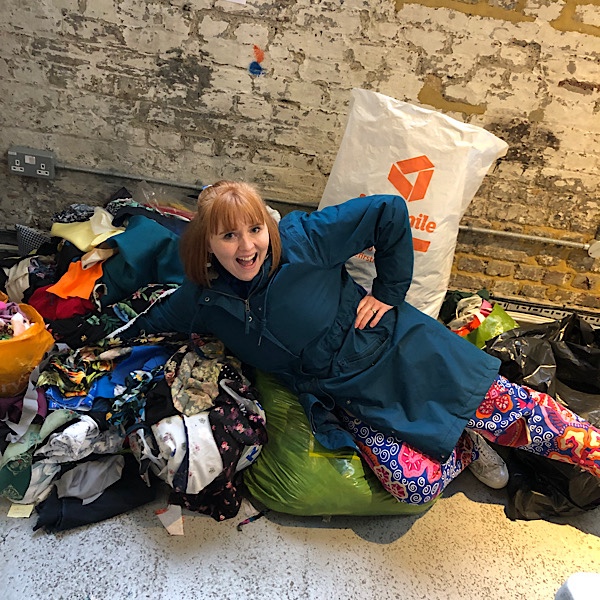
- We contacted local sewing charities and sewing community groups to ask them along to the event and take what they wanted, no need to bring items to swap. Perhaps you live close to a local college that runs fashion classes? Or a charity that teaches people to sew? Larger lengths of fabric above 2 metres are useful to these groups as they can use them for dressmaking
- Smaller pieces under 1 metre are useful if they are 100% cotton. We had a local community group who used them for quilting. And Susan who created these beautiful cotton hearts for children’s charity, From Me to You Hearts (photo below).
- Non-cotton fabrics under 1 metre are more problematic and difficult to use. Can you encourage friends to use up their scraps? Here are some of my tips and free scrap busting patterns.
- Small scraps left over from dressmaking we put into large textile bags that were recycled with First Mile. They only work with businesses and we were able to tag onto Craft Central’s contract with First Mile. If you are not able to dispose of scrap fabrics responsibly then it is probably best to ask people to bring pieces over 50cm for 100% cotton and over 1 metre for non-cottons.
- Find out what we did with the waste textiles and haberdashery from our January 2024 fabric swap.
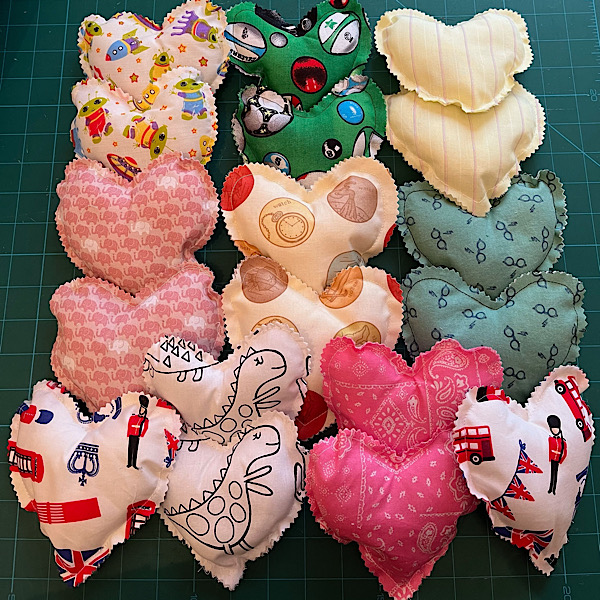
2. Keep it simple
I’ve attended a few clothes swaps over the years who check the clothes as you come in the door. Tokens are then issued for the type of garment and where it is from. This can create a long queue at the door and be a bit judgemental. When I attended the Fat Positive Clothes Swap in Deptford, London, it was a breath of fresh air. Organiser Patsy said there is so much left over she would rather people take what they need. I took this advice on board when I organised my swap. Using the motto ‘take what you can use’ created a relaxed atmosphere and didn’t alienate people who wanted to take more than they could bring.
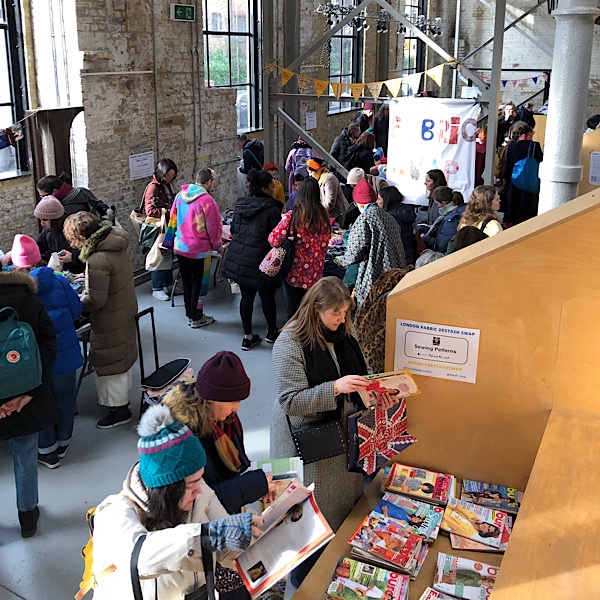
If this is your first time organising a sewing event then maybe start with a few friends. Get a group of you together to swap items you don’t want or can’t use for items that you do! You’ll be surprised that your trash is someone else’s treasure.
3. Be organised
It is fun to rummage at fabric swaps so we didn’t want to be too regimented with categories. But we knew it was easier for people to swap if the items were categorised. So we separated the tables into fabric lengths and various boxes for different types of haberdashery. We labelled everything up so people knew where to swap. The 50cm to 1 metre tables ended up being merged together so that made it more difficult for swappers but generally everyone stuck to the categories. We asked people to measure and label their fabrics before they arrived with the fibre content if they knew it. Most people did this and it was a big help. Here are a few sundry items we had to hand on the day:
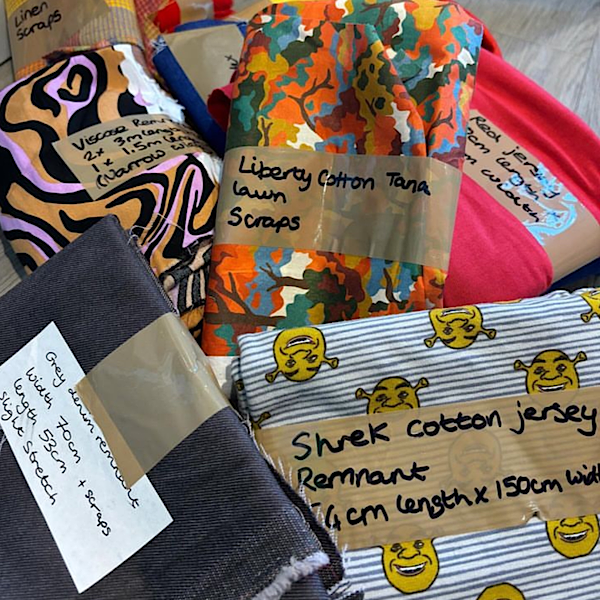
- Phone to take on the door payments (via Paypal), take photos and check people in via Eventbrite
- Scissors
- Measuring tape
- Change for on the door tickets
- Pen and paper to take down contact details of anyone who can help with the left over donations
- Water, snacks and a flask (hot chocolate is my drink of choice!)
4. Choose a venue
So you’ve decided on the size of your swap. A large swap for your local sewing community or a small intimate swap amongst friends. You need to choose a venue and be aware that this could cost money. it could be a local community centre, church, school hall, craft space or an area of a local coffee shop. See what’s around. Consider accessibility and transport. The size of the space will determine how many people can come and also you’ll have to factor the cost into tickets.
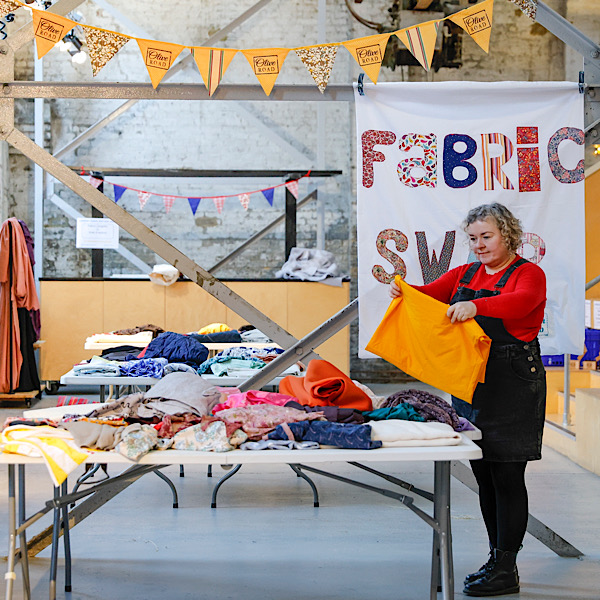
You will need tables to lay out the sewing goodies, can your venue provide this? Old boxes and baskets are useful to keep haberdashery and patterns in place.
5. Timings
How long do you want your event to be? Ours was 11am to 3pm. We set up the day before as was a large space and we had a lot of items ready to go on the tables before people arrived. It meant it was less rushed before the event. If you are paying for a venue you probably don’t want to add in this extra cost and prefer to set up the morning before. We finished at 3pm but ran out of energy to pack up so packed up on the Sunday. You might not have this luxury with your venue.
Most swaps have a ‘drop off’ hour. People drop off their items and are usually issued tokens during this phase of the event. Then are asked to come back to pick items, usually an hour later. We decided not to do this as it was January and Craft Central isn’t near any cafes or shops. Also, we already had lots of items available for people who arrived early. If you have nothing to start the swap with then it might be an idea to add in a drop off time. Decide whether people can continue to bring in new items during the swap time. We accepted items to be swapped right up until the closing time, which meant the swap refreshed throughout the event.
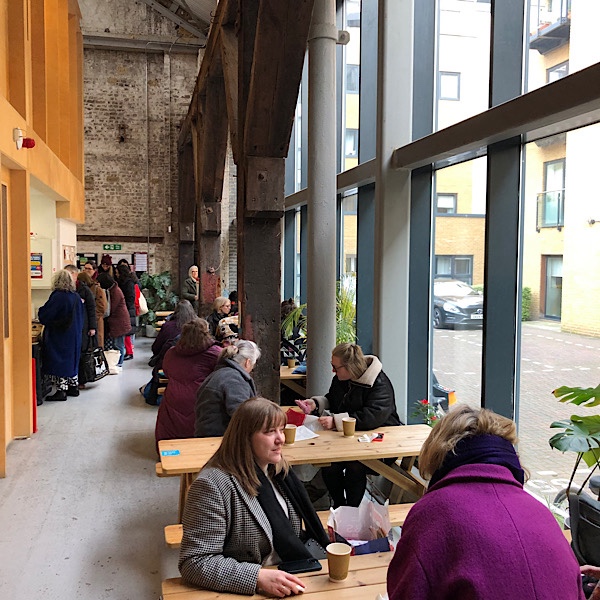
We organised a pop up cafe so people could spend the day with us and turn it into a sewing social. It meant they could go back to the tables to see what else had arrived.
6. Budget
Once you have found a venue, work out how much everything is going to cost you. If your event is over a certain size you will need to consider public liability insurance. There are companies that will issue insurance for one day events so it isn’t too expensive but worth considering. Are you going to pay for textile recycling bags? We didn’t budget enough for these and had to order an extra 3 and they were pricey. So make sure you add in a bit extra into your budget for contingency. If you have money left over and don’t want to keep it, you can always save it for your next swap or donate it to your favourite charity. Here is a summary of costs:
- Venue hire
- Table hire (if not included with the venue)
- Refreshments if you want to include this, we organised a pop up cafe where people could buy drinks and snacks
- Marketing / advertising fees
- Eventbrite fees (more on this below)
- Textile recycling bags (if offering a drop off for fabric scraps)
- Public Liability insurance
- Travel costs
- Wages
- Add 15% for contingency
7. Ticket price and marketing
Once you have worked out your budget, how many tickets will you need to sell to break even? How many people does your venue hold at one time? People come and go but you need to be prepared for everyone to be there at the same time.
How will you promote your event? We used Eventbrite as they advertise the event to people in the local area and people trust Eventbrite for payment, saving the tickets on their phone etc. They also have an app so we could check people in using our phones and it meant we could send emails before and after the event with information. However they take around a third of the ticket price so this is something to consider. Facebook might be a more cost effective option or even sell tickets on the door. We chose to sell tickets in advance so we knew how many people were coming. We also offered the option for people to buy tickets on the door as not everyone is in the digital world and some people prefer to leave this to the last minute.
I made a banner and bunting from my personal fabric scraps which helped decorate the large empty gallery space.
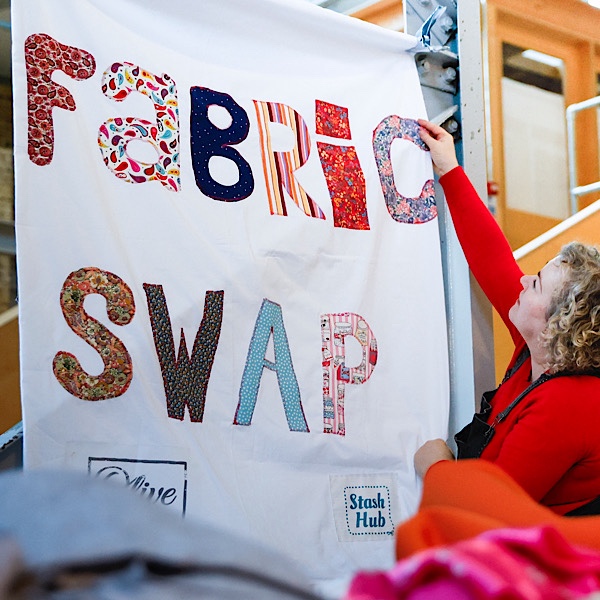
Have fun!
Yes, the swap is hard work with lots of lifting bags of fabric, which are surprisingly heavy! But it is so much fun. Everyone who came along made it a fantastic event and got involved. We had people who didn’t even know each other cut long pieces of fabric in two so they could share. Sewing is a solitary hobby so it is great to get out and meet other sewists. What could be better than chatting about sewing and getting free fabric?! So have fun with a warm feeling knowing that you have helped people swap fabric and haberdashery they can’t use for items they can. Pat yourself on the back for saving a ton of textiles from landfill.

We hope you’ve discovered some amazing gems at the @oliveroadlondon
@stash_hub London Fabric Swap and are feeling inspired!
Now it’s time to turn the treasures you discovered into a masterpiece! Create
something awesome using the unique materials you picked up at the swap and
share it with the community!
How to join in:
🛍 Grab your favourite fabric and supplies at the London Fabric Swap
✂️ Let your creativity run wild – craft something with your swap finds
📸 Snap a photo or video showcasing your creation
🌟 Share it on Instagram anytime before 24th August 2024
🔖 Tag hosts @oliveroadlondon and @stash_hub and use #LondonFabricSwap24
The Prizes:
💷 £50 sewing bundle of (new) patterns and vintage fabrics from Olive Road London
📱 1 year free subscription to sewing organiser app Stash Hub
🏆 We’re going to pick winners on the 24th August, giving you six months to get
creative with your swap finds!
Rules:
🔃 Your creation must prominently feature materials from the London Fabric Swap.
💪 Multiple entries are welcome!
🎨 You don’t have to sew a garment – use your imagination and choose any creative
way to use the supplies
😍 Feel free to tag us @oliveroadlondon and @stash_hub in your projects completed
after the closing date – even though you won’t be entered into the prize draw, we’d
still love to see what you make.